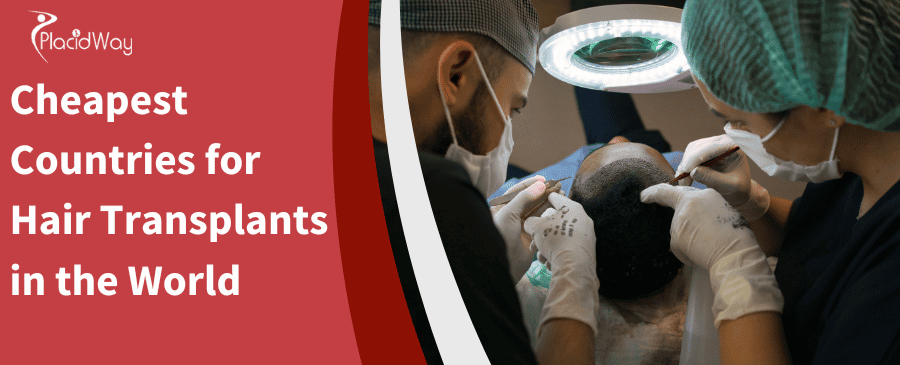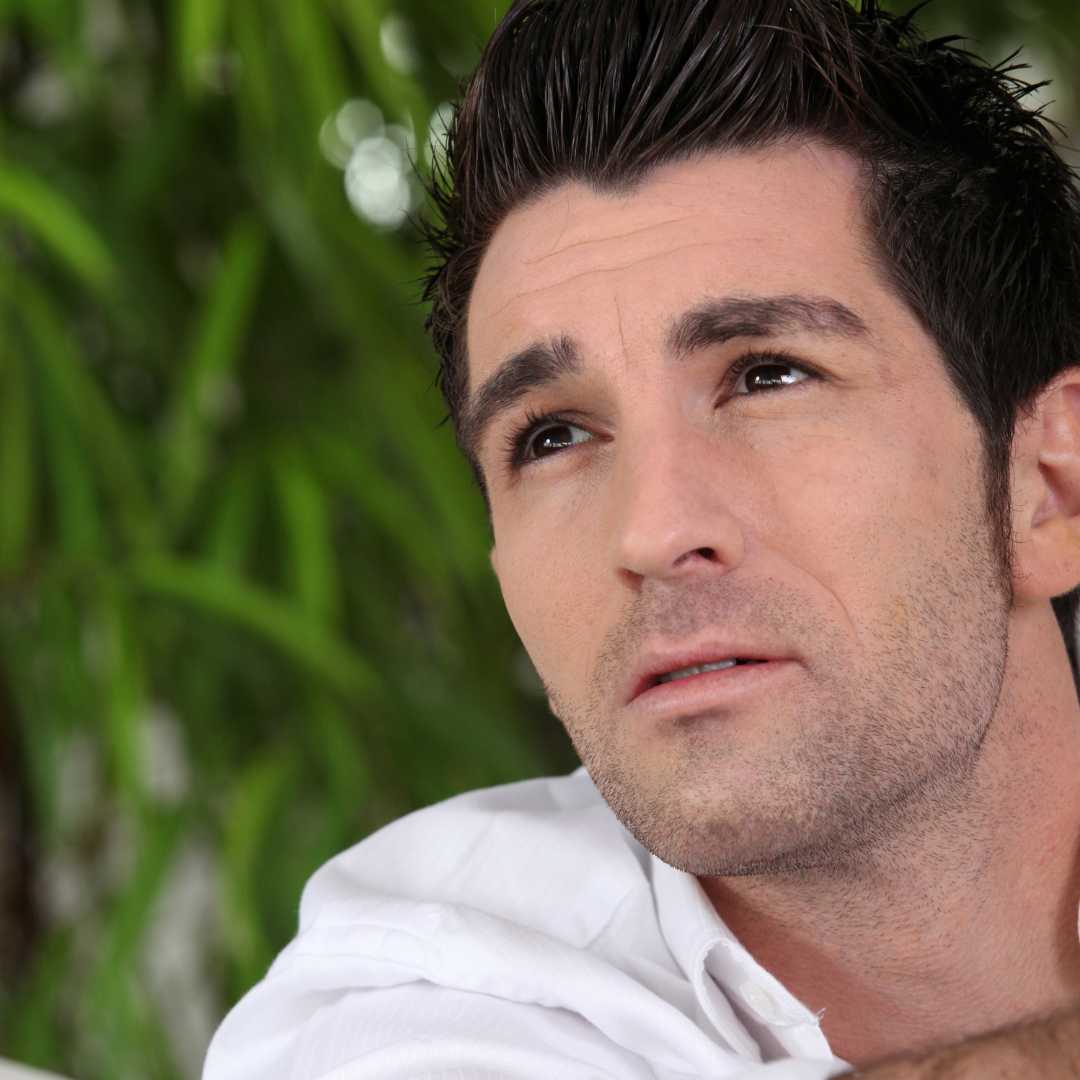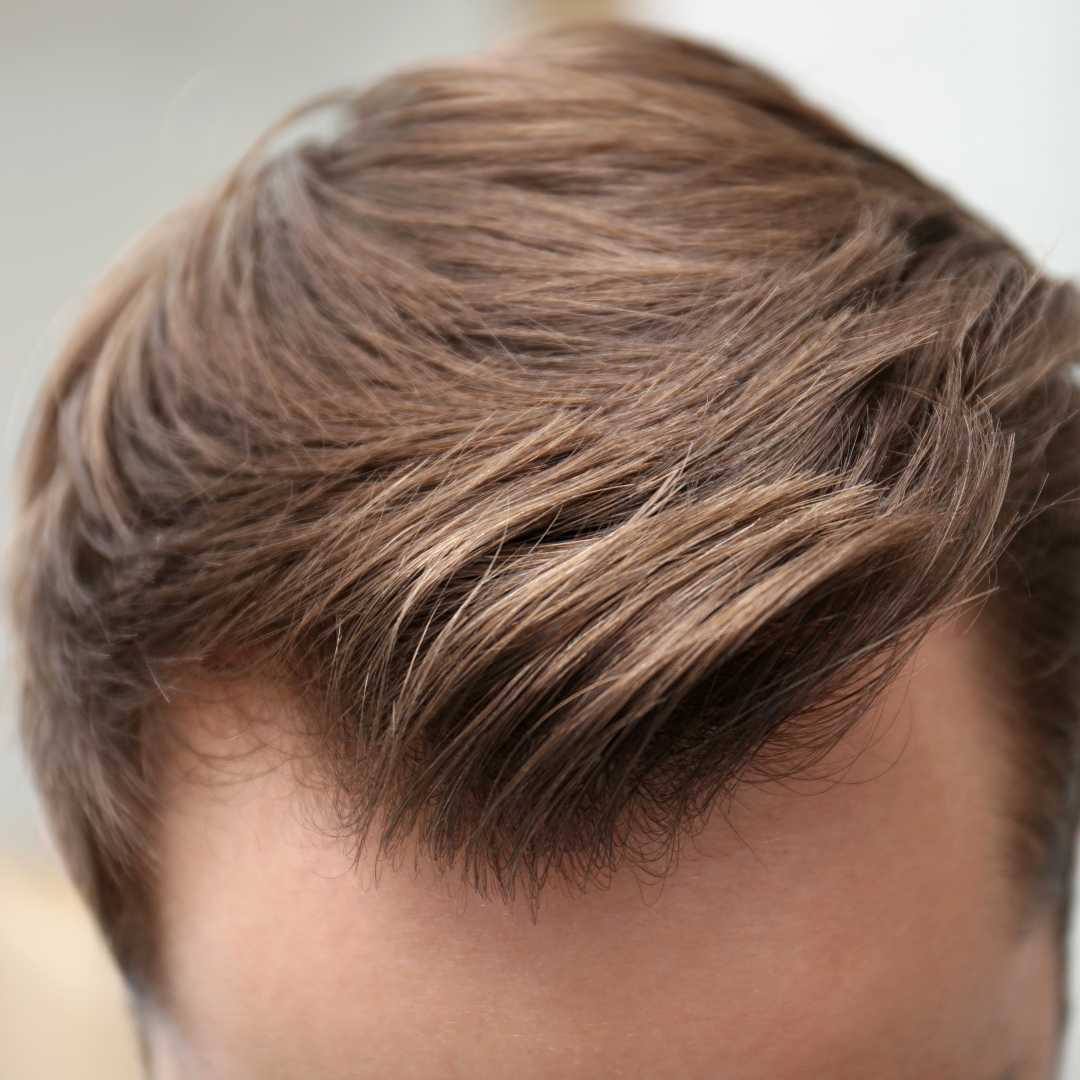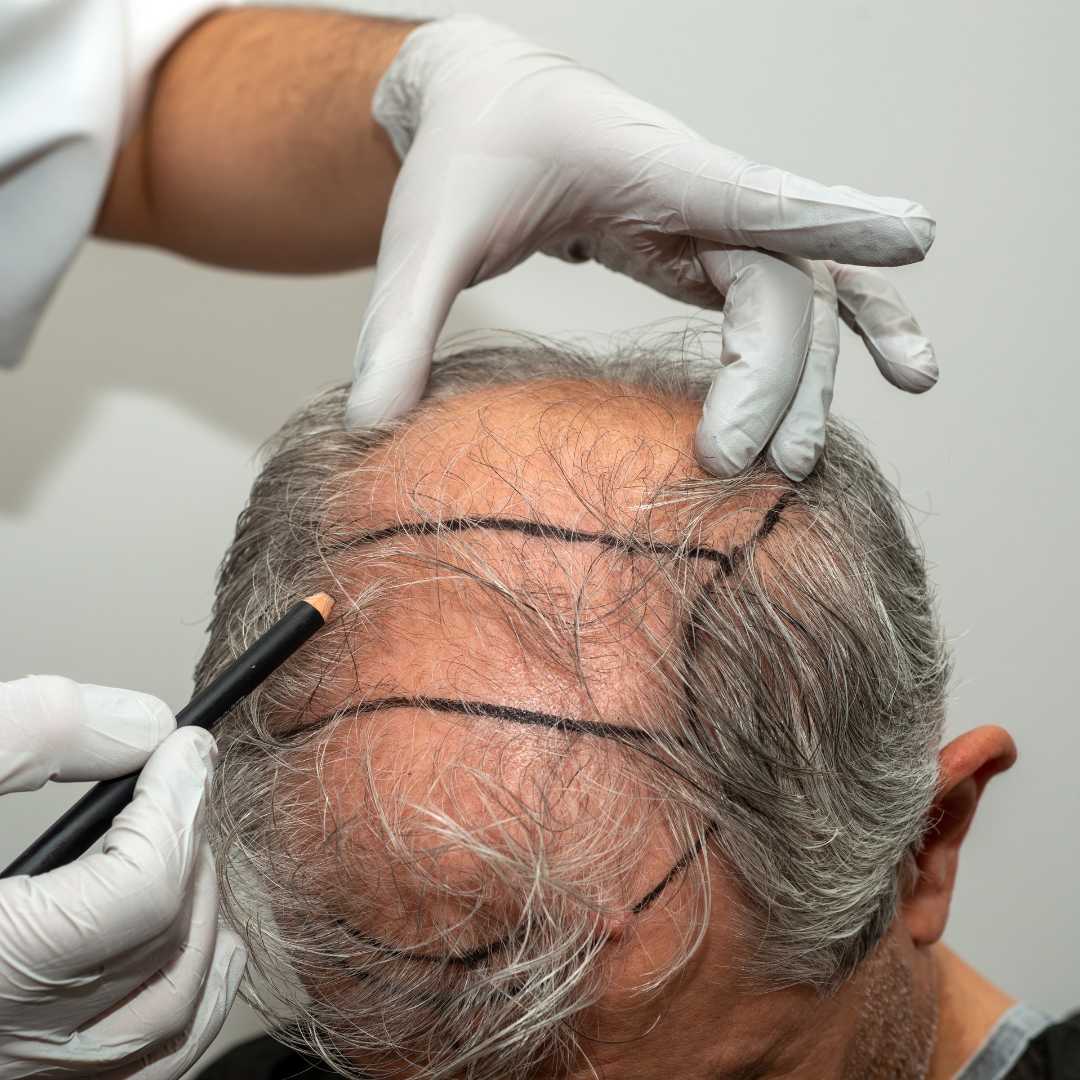
Hair transplantation has emerged as a globally sought-after solution for hair loss, many individuals are exploring international options to achieve their desired results at a more affordable price. The cost of a hair transplant can vary significantly depending on the country, the clinic's reputation, the surgeon's expertise, and the technique used (e.g., FUE, DHI). While quality should always be a priority, several countries offer excellent, budget-friendly options. The cheapest countries for hair transplants include Turkey, India, Mexico, Colombia, Thailand, Hungary, and Poland, with Turkey consistently ranking as the most affordable and popular destination. This guide explores the cheapest countries for hair transplants, providing insights into costs, procedures, and what to expect.
Key Takeaways
- Turkey remains the global leader for affordable hair transplants, with prices ranging from $1,000 to $3,500.
- Patients can save 50%–75% on hair transplant costs by choosing international destinations compared to Western countries.
- All-inclusive packages, often covering accommodation, transfers, and post-operative care, are common in popular medical tourism hubs.
- Beyond Turkey, countries like India, Mexico, Poland, and Hungary offer competitive pricing and high-quality services.?
Cheapest Countries for Hair Transplants in the World
The cheapest countries for hair transplants in the world include Turkey, India, Mexico, Colombia, Thailand, Hungary, and Poland. These nations are renowned for offering high-quality hair restoration procedures at a fraction of the cost compared to Western countries. Patients often choose these destinations for their combination of affordable pricing, experienced surgeons, and comprehensive treatment packages.
1. Turkey

Turkey continues to dominate the hair transplant market due to its exceptionally competitive pricing, highly experienced surgeons, and all-inclusive treatment packages.
The cost of a hair transplant in Turkey ranges between $1,000 and $3,500. Turkey has firmly established itself as the world's leading destination for hair transplant tourism. Thousands of patients from Europe, North America, and the Middle East flock to cities like Istanbul annually for hair restoration. The country's success is attributed to several factors: highly competitive pricing, experienced surgeons, advanced clinic infrastructure, and comprehensive packages that often include the procedure, accommodation, airport transfers, and post-operative care. Clinics like Smile Hair Clinic, Dr. Serkan Aygin Clinic, and Sule Hair Transplant are well-regarded for their patient-centric approach and natural-looking results. The sheer volume of procedures performed in Turkey allows clinics to offer lower prices while maintaining high standards.
Did You Know? Turkey accounts for approximately 50% of all medical procedures performed for medical tourists, with hair transplantation being the most common, attracting hundreds of thousands of patients each year. (Source: Este Medical Group)
2. India

India offers highly competitive hair transplant costs with an emphasis on advanced techniques and skilled medical professionals.
The cost of hair transplant in India typically ranges between $1,250 and $3,000. India is rapidly emerging as a strong contender in the medical tourism sector, particularly for hair transplants. Its appeal lies in its extremely low costs coupled with a large pool of highly qualified and experienced plastic surgeons and dermatologists. Clinics across major cities like Delhi, Mumbai, and Hyderabad provide advanced techniques such as FUE (Follicular Unit Extraction) and DHI (Direct Hair Implantation). The per-graft cost in India is among the lowest globally, making it an attractive option for those needing a large number of grafts. Patients can expect high-quality care in modern facilities, often equipped with the latest technology.
Expert Insight: "India's medical infrastructure has seen significant advancements, offering world-class facilities at a fraction of the cost found in Western countries. This makes it an ideal destination for procedures like hair transplants, where expertise and affordability are key." – Dr. Madhu, Dr. Madhu's Advanced Hair Transplant Centre.
3. Mexico

Mexico provides a convenient and cost-effective hair transplant solution for patients in the United States and Canada, often with all-inclusive packages.
The cost of a hair transplant in Mexico generally ranges between $2,000 and $5,000. For patients in North America, Mexico offers a highly convenient and affordable option for hair restoration. Cities along the border, such as Tijuana, and popular tourist destinations like Cancun, have well-established clinics catering to international patients. The proximity allows for easier travel and shorter recovery periods, often without the need for extensive long-haul flights. Mexican clinics are known for offering comprehensive packages, similar to Turkey, which can include the procedure, accommodation, and ground transportation. Clinics like TJ Hair Clinic in Tijuana are accredited and focus on providing a seamless experience for medical tourists.
4. Colombia
Colombia is gaining recognition for its high-quality hair transplant services, particularly in DHI, at significantly lower prices than the U.S.
The cost of a hair transplant in Colombia typically ranges between $2,000 and $4,500. Colombia is becoming a prominent destination for medical tourism, especially for aesthetic procedures like hair transplants. With modern clinics and skilled surgeons, it offers a compelling alternative for patients seeking high-quality care at a more accessible price point than in the U.S. and Canada. Many clinics in cities like Cali and Bogota specialize in advanced techniques, including DHI (Direct Hair Implantation), which is highly sought after for its precision and natural results. Patients can often find all-inclusive packages that cover consultations, surgery, medication, and sometimes even travel arrangements.
5. Thailand
Thailand combines world-class medical facilities with a vibrant tourist experience, offering competitive pricing for hair transplants.
The cost of hair transplant in Thailand ranges between $2,000 and $5,000. Thailand has long been a popular destination for medical tourism, known for its excellent hospitals and skilled medical professionals. This expertise extends to hair restoration, with clinics in Bangkok and Phuket offering state-of-the-art facilities and experienced surgeons. Patients can undergo advanced FUE and DHI procedures while enjoying a relaxing recovery in a beautiful setting. The competitive pricing, combined with the allure of a vacation, makes Thailand an attractive option for international patients. Clinics like Absolute Hair Clinic and PAI Medical Group are highly reputable.
6. Hungary
Hungary provides a European option for affordable hair transplants, maintaining high medical standards while offering lower costs than Western Europe.
The cost of hair transplant in Hungary averages between $1,400 and $4,200. For patients within Europe, Hungary stands out as a top choice for cost-effective hair transplants. Budapest, in particular, has become a hub for medical tourism, attracting patients seeking quality procedures at a fraction of the cost found in countries like the UK, Germany, or France. Hungarian clinics adhere to strict EU medical standards, ensuring high-quality care and safety. While prices may be slightly higher than in Turkey or India, they remain significantly more affordable than Western European counterparts. Many clinics offer transparent pricing and comprehensive care.
7. Poland
Poland is gaining traction as a reliable and affordable destination for hair transplants within Central Europe, offering good value for money.
The cost of a hair transplant in Poland generally ranges between $3,000 and $6,500. Poland is increasingly recognized for its quality medical services, including hair transplants. While its prices might be a bit higher than Turkey's, they are still considerably lower than those in Western Europe. Polish clinics, particularly in cities like Wroclaw, combine modern technology with experienced surgeons, often with international training. Patients can expect a high standard of care and good results, making it an attractive option for those seeking a balance between cost and proximity within Europe.
Estimated Hair Transplant Costs by Country
| Country | Average Cost Range (USD) | Notes |
|---|---|---|
| Turkey | $1,000 - $3,500 | Often includes all-inclusive packages with accommodation, transfers, and post-op care. |
| India | $1,250 - $3,000 | Highly competitive per-graft pricing, strong medical infrastructure. |
| Mexico | $2,000 - $5,000 | Popular for North American patients due to proximity; comprehensive packages are common. |
| Colombia | $2,000 - $4,500 | Growing destination with modern clinics, particularly for DHI. |
| Thailand | $2,000 - $5,000 | Known for high-quality medical tourism facilities and experienced surgeons. |
| Hungary | $1,400 - $4,200 | Offers competitive pricing within Europe, especially for FUE. |
| Poland | $3,000 - $6,500 | Good option for European patients seeking quality at a lower cost than Western Europe. |
| Brazil | $3,500 - $10,000 | More expensive than Turkey but still cheaper than North America/Western Europe; higher-end clinics available. |
| USA | $8,000 - $20,000+ | Included for comparison; significantly higher due to labor, facility, and insurance costs. |
| UK | $7,000 - $14,000+ | Included for comparison; generally higher than Eastern Europe and Asia. |
Hair Transplant Procedures: Understanding Your Options
Choosing the right hair transplant technique is crucial for achieving natural-looking and lasting results.
Understanding the different hair transplant procedures is key to making an informed decision. The primary techniques used globally are Follicular Unit Extraction (FUE) and Direct Hair Implantation (DHI), with FUT (Follicular Unit Transplantation) being less common but still available. Each method has its advantages and considerations regarding recovery, scarring, and suitability for different types of hair loss.
Follicular Unit Extraction (FUE)
FUE is a popular and minimally invasive hair transplant technique that involves extracting individual hair follicles.
FUE is the most widely performed hair transplant procedure globally. It involves the individual extraction of hair follicles (grafts) directly from the donor area (usually the back or sides of the head) using a micro-punch tool. These follicles are then meticulously implanted into the balding or thinning areas.
- Advantages: Minimally invasive, no linear scar (only tiny, dot-like scars that are barely visible), faster recovery time, less post-operative pain.
- Disadvantages: Can be more time-consuming for large sessions, may require shaving the donor area.
- Candidacy: Suitable for most patients, including those who prefer to wear their hair short.
Direct Hair Implantation (DHI)
DHI is an advanced modification of FUE, offering higher precision and often quicker implantation for natural density.
DHI is a specialized form of FUE where hair follicles are extracted using a similar method but are then immediately implanted into the recipient area using a special implanter pen (Choi Implanter Pen). This tool allows the surgeon to control the depth, angle, and direction of each implanted follicle with extreme precision.
- Advantages: Higher graft survival rates, denser and more natural-looking results, no need for pre-made incisions, potentially faster recovery due to reduced trauma.
- Disadvantages: Requires highly skilled and experienced surgeons, can be slightly more expensive than traditional FUE.
- Candidacy: Ideal for patients seeking maximum density and precision, particularly for hairline design.
Follicular Unit Transplantation (FUT)
FUT is an older but still effective hair transplant method involving the removal of a strip of scalp from the donor area.
FUT, also known as the "strip method," involves surgically removing a small strip of scalp from the donor area. This strip is then dissected under a microscope into individual follicular units. These units are subsequently implanted into the recipient area.
- Advantages: Can harvest a large number of grafts in a single session, often more cost-effective for very large bald areas.
- Disadvantages: Leaves a linear scar in the donor area, longer recovery time, more post-operative discomfort.
- Candidacy: Suitable for patients with extensive hair loss who do not mind a linear scar and prefer to keep their hair long enough to cover it.
Candidacy for Hair Transplants
Determining if you are a suitable candidate for a hair transplant is the first step towards successful hair restoration.
Not everyone is an ideal candidate for a hair transplant. A thorough evaluation by a qualified surgeon is essential. Key factors influencing candidacy include:
- Type and Cause of Hair Loss: Most common for androgenetic alopecia (male or female pattern baldness). Other causes like trauma or certain medical conditions may also be treatable.
- Donor Hair Availability: Sufficient healthy hair follicles in the donor area (typically the back and sides of the head) are crucial.
- Hair Characteristics: Hair color, texture, and curl can influence the naturalness of the results.
- Overall Health: Good general health is important to ensure safe surgery and recovery.
- Realistic Expectations: Understanding the potential outcome and limitations of the procedure.
Risks and Side Effects of Hair Transplants
While generally safe, hair transplants carry some potential risks and side effects that patients should be aware of.
Like any surgical procedure, hair transplants come with potential risks, although they are generally considered safe when performed by experienced professionals in accredited clinics.
- Common Side Effects:
- Swelling: Especially around the forehead and eyes, usually subsides within a few days.
- Redness: In both donor and recipient areas, can last for a few weeks to months.
- Itching: Common during the healing process.
- Numbness: Temporary loss of sensation in donor or recipient areas.
- Mild Pain/Discomfort: Manageable with prescribed pain medication.
- Less Common Risks:
- Infection: Rare but possible, usually treated with antibiotics.
- Folliculitis: Inflammation or infection of the hair follicles, can be treated with topical solutions.
- Shock Loss: Temporary shedding of existing hair around the transplant area, usually grows back.
- Poor Growth: Some transplanted grafts may not grow as expected.
- Unnatural Appearance: If not performed by a skilled surgeon, the results may look pluggy or sparse.
- Scarring: While FUE minimizes visible scarring, some minor scarring is inevitable. FUT leaves a linear scar.
Hair Transplant Recovery and Aftercare
Proper post-operative care is vital for optimal healing and the successful growth of transplanted hair.
The recovery period after a hair transplant is crucial for ensuring the best possible results. Patients typically experience minor discomfort and swelling for the first few days.
- Immediately After:
- A bandage may be applied to the donor area.
- Patients are usually advised to sleep with their head elevated to reduce swelling.
- Special spray solutions and mild shampoos are often provided for initial washing.
- First Few Weeks:
- Small scabs will form over the transplanted follicles and usually fall off within 7-14 days.
- Patients are advised to avoid strenuous activities, direct sunlight, and swimming.
- Slight shedding of the transplanted hair is normal (shock loss).
- Months 3-6:
- New hair growth begins, often appearing thin and fine initially.
- Months 6-12:
- Hair continues to thicken and mature.
- 12-18 Months:
- Final results become evident as the hair fully matures.
- Aftercare Tips:
- Follow all post-operative instructions diligently.
- Use prescribed medications (e.g., anti-inflammatories, antibiotics, finasteride, minoxidil).
- Protect your scalp from sun exposure.
- Maintain a healthy lifestyle.
Did You Know? The full results of a hair transplant can take up to 12-18 months to become completely visible, as the transplanted hair needs time to grow and mature.
Preparing for Your Hair Transplant Journey
Thorough preparation ensures a smooth and successful hair transplant experience, especially when traveling abroad.
If you're considering a hair transplant abroad, careful planning is essential.
- Research Clinics and Surgeons: Look for clinics with accreditations, experienced surgeons, positive patient reviews, and transparent pricing.
- Virtual Consultation: Most reputable clinics offer online consultations where you can discuss your case, share photos, and get a preliminary assessment and quote.
- Travel Arrangements: Book flights and accommodation well in advance. Consider clinics offering all-inclusive packages for convenience.
- Medical History: Be prepared to provide a detailed medical history and disclose any medications you are taking.
- Pre-Operative Instructions: Follow any instructions given by your clinic, such as avoiding alcohol, smoking, and certain medications (e.g., blood thinners) before the procedure.
- Budgeting: Factor in not just the procedure cost but also travel, accommodation, food, and potential post-operative care needs.
Why Choose PlacidWay for Your Hair Transplant Abroad?
PlacidWay connects you with top-tier, affordable hair transplant clinics worldwide, ensuring a seamless and trustworthy medical tourism experience.
Navigating the world of medical tourism for a hair transplant can be daunting, but PlacidWay simplifies the process. We are a leading global medical tourism platform dedicated to connecting patients with the best and most affordable hair transplant clinics in destinations like Turkey, India, Mexico, and beyond.
PlacidWay offers:
- Access to Vetted Clinics: We partner with internationally accredited clinics and highly experienced surgeons, ensuring quality and safety.
- Transparent Pricing: Get clear, upfront cost estimates and compare packages from various clinics to find the best value.
- Personalized Guidance: Our dedicated patient coordinators assist you at every step, from initial inquiry and consultation to travel arrangements and post-operative support.
- Comprehensive Information: We provide detailed information on procedures, recovery, and what to expect, empowering you to make informed decisions.
- All-Inclusive Packages: Many of our partner clinics offer convenient packages that cover surgery, accommodation, transfers, and post-operative care, streamlining your journey.
- Unbiased Support: We act as your advocate, ensuring your needs are met and you receive the highest standard of care.
Start Your Hair Transformation Journey with PlacidWay Today! Ready to regain your confidence with a hair transplant? Contact PlacidWay for a free consultation and let us help you find the perfect clinic and package that suits your needs and budget. Get a Free Quote Now!
Frequently Asked Questions (FAQs)
Common questions about hair transplants and medical tourism answered.
Q1: How long does a hair transplant procedure usually take?
A hair transplant procedure typically takes between 4 to 8 hours, depending on the number of grafts and the technique used (FUE or DHI). The duration varies based on the extent of hair loss and the chosen method. For instance, a larger number of grafts or the precise DHI technique might extend the procedure time.
Q2: Is a hair transplant permanent?
Yes, the results of a hair transplant are generally considered permanent because the transplanted hair follicles are usually taken from areas of the scalp (donor area) that are genetically resistant to balding. These follicles retain their characteristics even after being transplanted to the balding areas, meaning they are unlikely to fall out.
Q3: Will my hair transplant look natural?
When performed by a skilled and experienced surgeon using advanced techniques like FUE or DHI, a hair transplant should look very natural, blending seamlessly with your existing hair. The surgeon's artistry in designing the hairline and implanting grafts at the correct angle and direction is crucial for achieving a natural appearance.
Q4: How much downtime is required after a hair transplant?
Most patients can return to light activities within 2-3 days after a hair transplant, but it's recommended to avoid strenuous activities for at least 2 weeks. Initial swelling and redness typically subside within a week to ten days, and small scabs will fall off around the same time.
Q5: What is the success rate of hair transplants?
The success rate of hair transplants is generally high, with over 90% of transplanted grafts typically surviving and growing in the recipient area. Factors influencing success include the surgeon's expertise, proper post-operative care, and the patient's overall health and adherence to instructions.
Q6: Can women get hair transplants?
Yes, women can get hair transplants, particularly those experiencing female pattern hair loss, hair thinning, or hair loss due to trauma or scarring. The principles are similar to men's hair transplants, but the approach may vary depending on the pattern of hair loss. A thorough consultation is essential to determine suitability.
Q7: Are all-inclusive packages worth it for hair transplants abroad?
Yes, all-inclusive packages for hair transplants abroad are often worth it as they simplify the entire process by covering the procedure, accommodation, airport transfers, and sometimes even post-operative medications. This can significantly reduce stress and logistical challenges for international patients, often leading to better overall value compared to paying for each service separately.
Ready to regain your confidence with a hair transplant? Explore affordable, high-quality options in Turkey, India, Mexico, and more. Contact PlacidWay today for a free consultation and get a personalized quote!


.png)





.png)
.png)







Share this listing